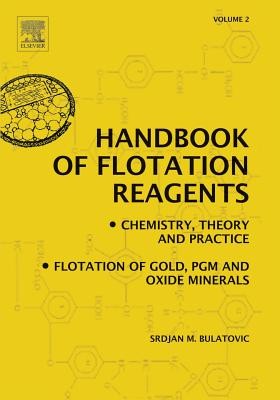
- We will send in 10–14 business days.
- Author: Srdjan M Bulatovic
- Publisher: Elsevier Science
- Year: 2010
- Pages: 228
- ISBN-10: 1493302418
- ISBN-13: 9781493302413
- Format: 17.8 x 25.4 x 1.2 cm, minkšti viršeliai
- Language: English
- SAVE -10% with code: EXTRA
Handbook of Flotation Reagents: Chemistry, Theory and Practice (e-book) (used book) | bookbook.eu
Reviews
Description
Handbook of Flotation Reagents: Chemistry, Theory and Practice: Flotation of Gold, PGM and Oxide Minerals, Volume 2 focuses on the theory, practice, and chemistry of flotation of gold, platinum group minerals (PGMs), and the major oxide minerals, along with rare earths. It examines separation methods whose effectiveness is limited when using conventional treatment processes and considers commercial plant practices for most oxide minerals, such as pyrochlore-containing ores, copper cobalt ores, zinc ores, tin ores, and tantalum/niobium ores. It discusses the geology and mineralogy of gold, PGMs, and oxide minerals, as well as reagent and flotation practices in beneficiation. The book also looks at the factors affecting the floatability of gold minerals and describes PGM-dominated deposits such as Morensky-type deposits, hydrothermal deposits, and placer deposits. In addition, case studies of flotation and beneficiation in countries such as Canada, Africa, Russia, Chile, and Saudi Arabia are presented. This book will be useful to researchers, university students, and professors, as well as mineral processors faced with the problem of beneficiation of difficult-to-treat ores.
EXTRA 10 % discount with code: EXTRA
The promotion ends in 23d.05:07:23
The discount code is valid when purchasing from 10 €. Discounts do not stack.
- Author: Srdjan M Bulatovic
- Publisher: Elsevier Science
- Year: 2010
- Pages: 228
- ISBN-10: 1493302418
- ISBN-13: 9781493302413
- Format: 17.8 x 25.4 x 1.2 cm, minkšti viršeliai
- Language: English English
Handbook of Flotation Reagents: Chemistry, Theory and Practice: Flotation of Gold, PGM and Oxide Minerals, Volume 2 focuses on the theory, practice, and chemistry of flotation of gold, platinum group minerals (PGMs), and the major oxide minerals, along with rare earths. It examines separation methods whose effectiveness is limited when using conventional treatment processes and considers commercial plant practices for most oxide minerals, such as pyrochlore-containing ores, copper cobalt ores, zinc ores, tin ores, and tantalum/niobium ores. It discusses the geology and mineralogy of gold, PGMs, and oxide minerals, as well as reagent and flotation practices in beneficiation. The book also looks at the factors affecting the floatability of gold minerals and describes PGM-dominated deposits such as Morensky-type deposits, hydrothermal deposits, and placer deposits. In addition, case studies of flotation and beneficiation in countries such as Canada, Africa, Russia, Chile, and Saudi Arabia are presented. This book will be useful to researchers, university students, and professors, as well as mineral processors faced with the problem of beneficiation of difficult-to-treat ores.


Reviews